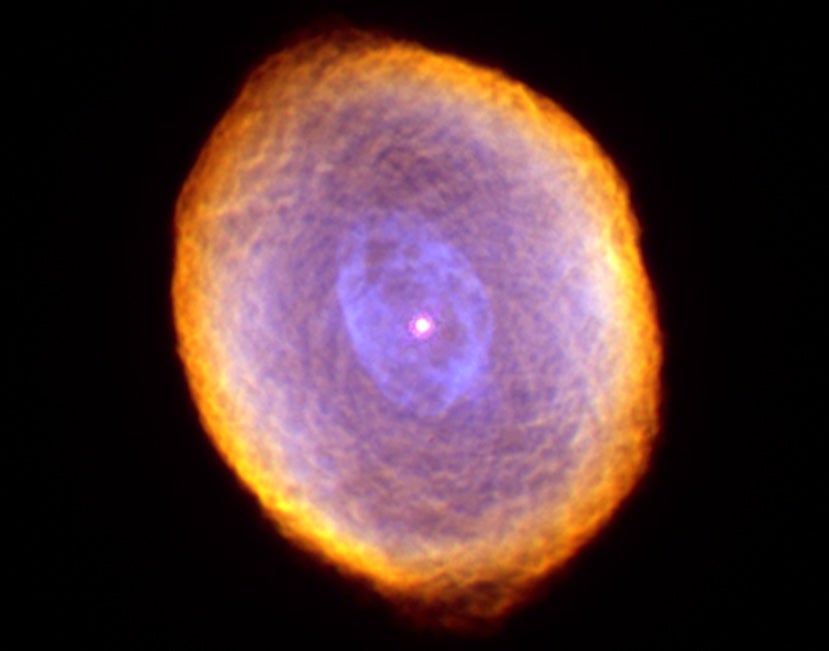
The Spirograph Nebula gets its name from the microstructure inside the spherical nebula. Anyone who played with that toy will remember the fascinating designs it made using ellipses. IC 418’s double shells of gas similarly host irregular clumps distributed along various ellipses. This nebula lies roughly 2,500 light-years away and spans nearly a third of a light-year. Planetary nebulae are short-lived objects that persist for up to 10,000 years before dispersing to invisibility, enriching the galaxy with matter than can be recycled to create future stars and planets.
While many planetaries look similar in a telescope, especially among the rings and disks, their subtle variations become obvious when imaged with large telescopes. No two planetary nebulae are identical, particularly because there are many variables at play when shaping such nebulae. Also important is the perspective of the observer. Most aging stars eject matter from their poles. If we see a polar view, the disk shape is obvious. But if we have an equatorial perspective, it may take on a boxy appearance. As the nebula expands, the presence and density of interstellar material will deform the shape by slowing down the momentum of dispersing nebular gas. Companion stars certainly play a role in the final appearance, and astronomers even speculate the presence of planets, especially gas giants, could affect the shape as well.
The Spirograph Nebula gets its name from the microstructure inside the spherical nebula. Anyone who played with that toy will remember the fascinating designs it made using ellipses. IC 418’s double shells of gas similarly host irregular clumps distributed along various ellipses. This nebula lies roughly 2,500 light-years away and spans nearly a third of a light-year. Planetary nebulae are short-lived objects that persist for up to 10,000 years before dispersing to invisibility, enriching the galaxy with matter than can be recycled to create future stars and planets.









